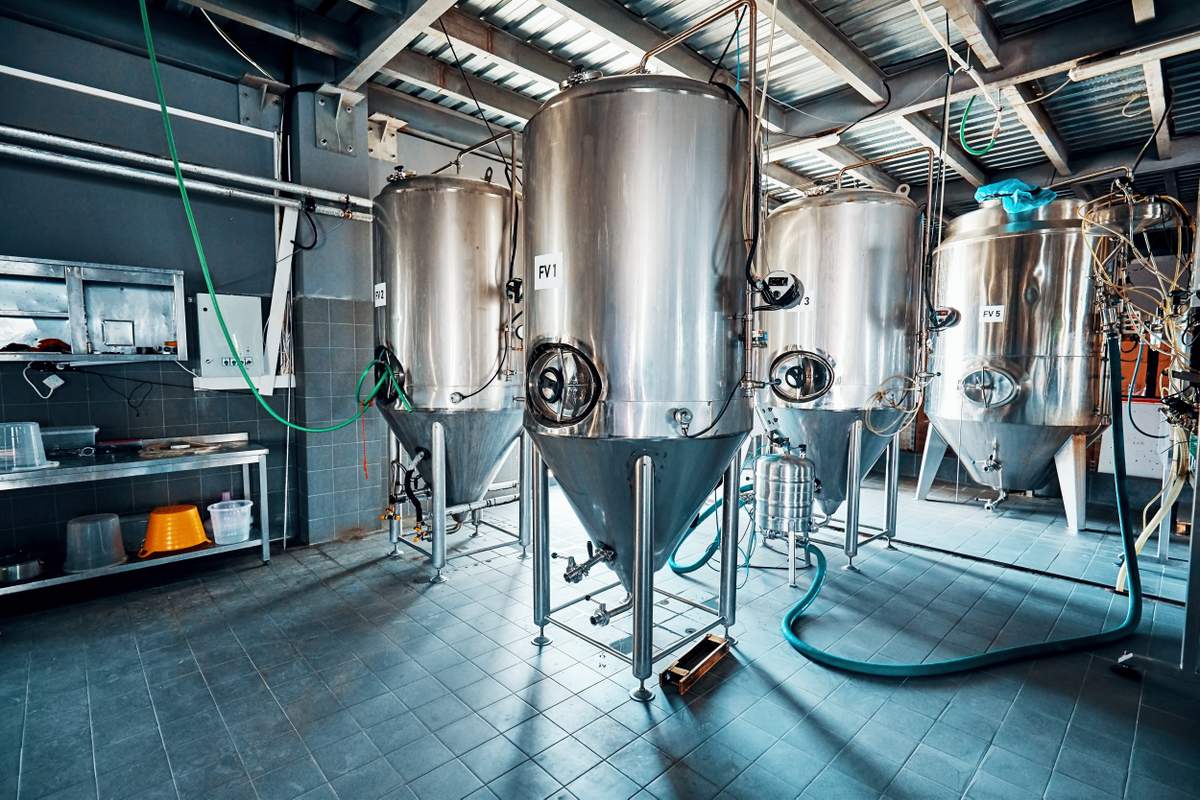
Proper cleaning in the brewery is the single most crucial thing brewers can do to ensure good quality, great tasting beer, time after time. Caustic (NaOH or KOH) has been the primary chemical of choice in breweries to remove protein soil from the brewhouse to packaging and everything in between for decades. With its high pH (>12) at 2 to 3 percent active caustic, sodium hydroxide or potassium hydroxide is very effective at hydrolyzing (breaking down) soil.
Without additional additives such as surfactants, chelators, water conditioners and rinse aids, however, caustic used alone can promote beerstone deposits and leave unsanitary surfaces. Nowadays, the so-called “built” caustics with the aforementioned additives can significantly reduce the amount of chemical required to clean the surface and reduce or eliminate the need for an acid neutralization step after the cleaning.
Ok, here’s my product plug: Birko’s new CIP-erior Liquid Caustic CIP is just such a product. Designed especially for brewery CIP, CIP-erior utilizes the latest and greatest advances in surfactants, chelation, dispersants (polymers) and rinse aids to provide excellent cleaning while requiring less chemical to do the job and reduces the need for an acid finish afterward. Now, let me give you an example of why caustics need help.
Brewhouse CIP cleaning using caustic and hydrogen peroxide
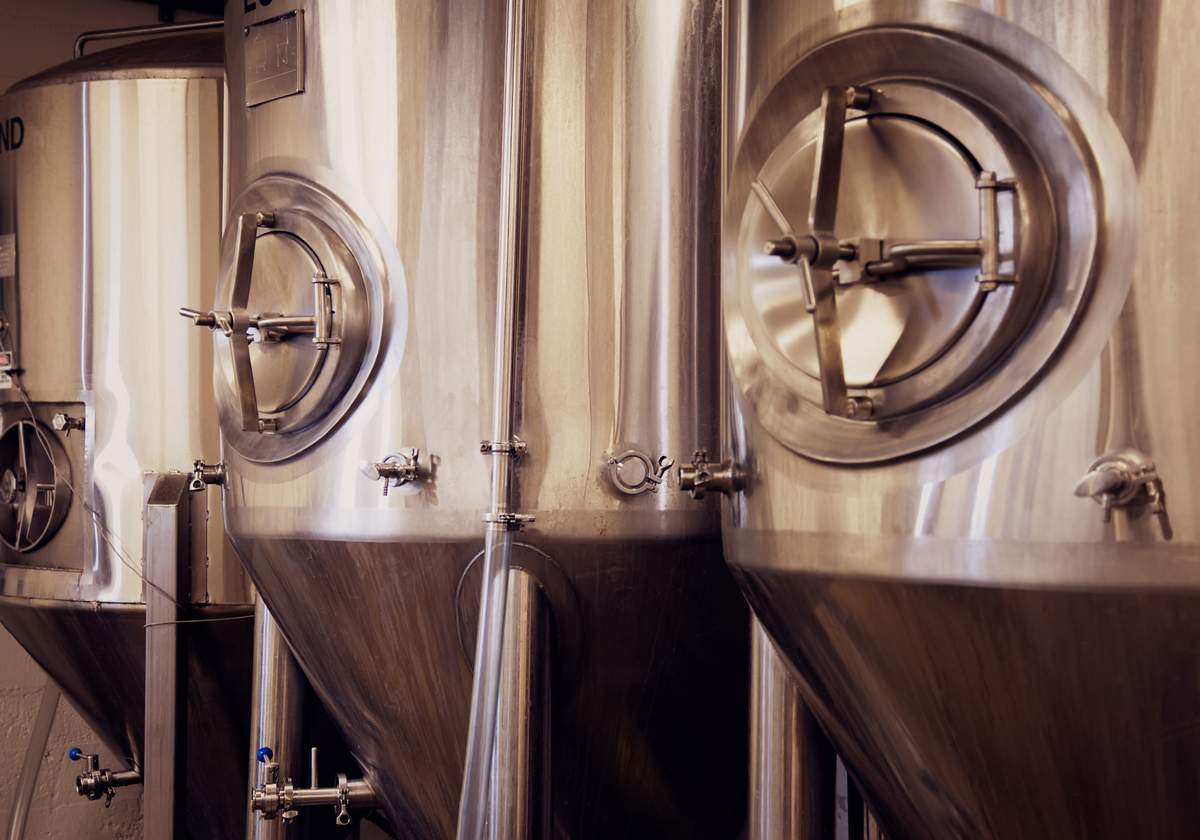
My kettle is not coming clean! I have to physically get in the kettle and scrub after I run the CIP (clean in place) to remove the remaining soil!
Unfortunately, this is a very common complaint of many craft brewers, especially in breweries that run multiple batches through the brewhouse between CIP runs. Why? Protein tends to bind to the metal and alkalinity by itself will not remove it. The soil is typically very soft and removes easily when wiped with a sponge or cloth but will not come off with the spray from the CIP nozzle. Many brewers accept this annoyance as “just the way it is,” but many astute brewers have long known or are now discovering that adding hydrogen peroxide (H202) to an alkaline cleaning solution can assist removing protein and calcium deposits in brewhouse cleaning.
Chlorinated caustic cleaners, once popular for cleaning breweries were found to cause serious damage to stainless steel, including pitting and stress corrosion cracking (SCC). Many brewers have since discontinued using chlorinated alkaline cleaners. Non-caustic, oxygenated alkaline powdered cleaners introduced in the 1990s were and are still very effective, and are somewhat safer to use from a PPE (personal protective equipment) standpoint. These cleaners were well received by small craft brewers and became wildly popular with homebrewers. With the rapid growth of the craft brewing industry, however, successful craft brewers graduating to larger brewing systems found that powdered cleaners were not as easy to use as they were compared to a smaller brew system.
Even if the brewery does not have a dedicated CIP system, liquids tend to be easier to measure and dispense than powdered products, and liquids do not have to be dissolved into water. The problem in brewhouse cleaning using sodium hydroxide (NaOH) and potassium hydroxide (KOH) cleaners is that without some assistance from other ingredients or process, often fail to remove all of the protein from the mashtun screen and brewkettle. The problem can also arise in fermenter and keg cleaning, but this article will focus on brewhouse cleaning.
Typical Brewhouse Cleaning Problems
Mashtun
Mashtuns and lautertuns are typically not that difficult to clean because there is not as much heat required in the mash compared to the kettle, but the protein in the malt can cling to the bottom of mashtun screens. Many mashtuns are manufactured with spray nozzles that only clean the top of the mash screens but not the bottom. Often the screens have to be removed and scrubbed by hand to remove the soil from the bottom of the screens.
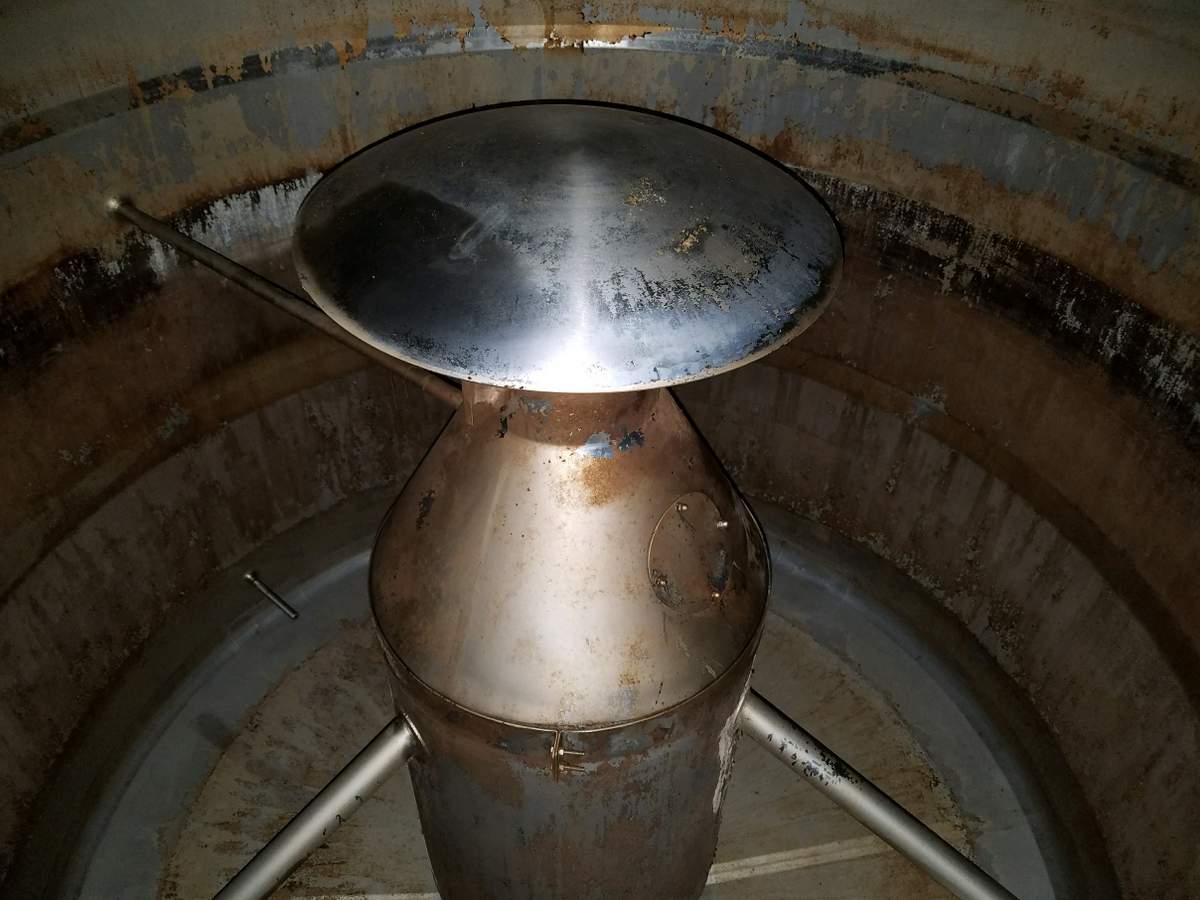
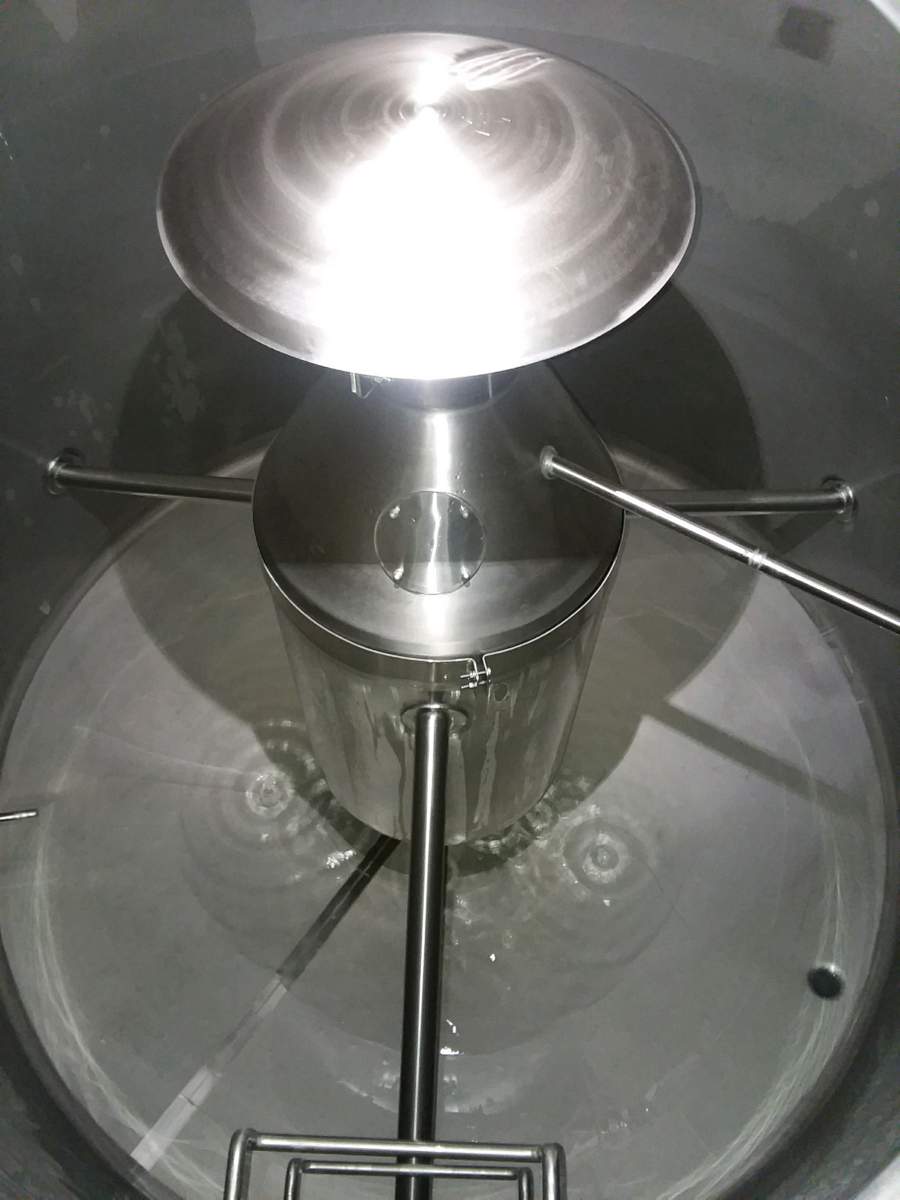
Kettle
The primary issue in the kettle is that the steam jackets tend to bake on the soil, and calcium also tends to precipitate on the heated areas as well. Amber protein stains remain after doing a CIP, and the brewer will have to climb inside the kettle and scrub the remaining soil that was not removed during cleaning. Acid is the best way to remove the white calcium deposit on the jacket but requires a separate cleaning step. For direct fired and immersion coil heated kettles and calandrias, there is so much heat applied to boil the wort, the baked-on soil often turns to carbon, and is very difficult to remove. A concentrated caustic solution will remove the black charcoal-like deposit. In calandrias, the deposit can become so hard, drill bits will break-off trying to remove plugged tubes.
Heat Exchanger
The heat exchanger can be difficult to clean and impossible to inspect unless it is taken apart. It is therefore is the culprit in contaminating beer if not properly cleaned and sanitized prior to sending wort to it. Hops from heavily hopped beers like IPA’s can clog the heat exchanger as well.
The Solution
In recent years, the addition of either peracetic acid hydrogen peroxide, has been found to great assist the displacement of protein deposits when added to sodium and potassium hydroxide cleaning solutions at the point of use. Unfortunately, hydrogen peroxide is not stable at high pH, so the hydrogen peroxide must be added to the cleaning solution just before turning on the pump. Combining the concentrates results in a violent reaction, so it is best to make sure the caustic is in solution and mixed well before adding the hydrogen peroxide to the cleaning solution before starting the CIP.
Adding as little 1 oz of 34 percent hydrogen peroxide per gallon of a caustic cleaning solution can dramatically enhance the cleaning power of the caustic used to clean the brewhouse. The bubbles in the cleaning solution, while short-lived, (not stable for the long term) help displace starchy and protein soils from the metal by getting underneath the soil and forcing the soil away from the metal surface. The soil can then be simply rinsed away.
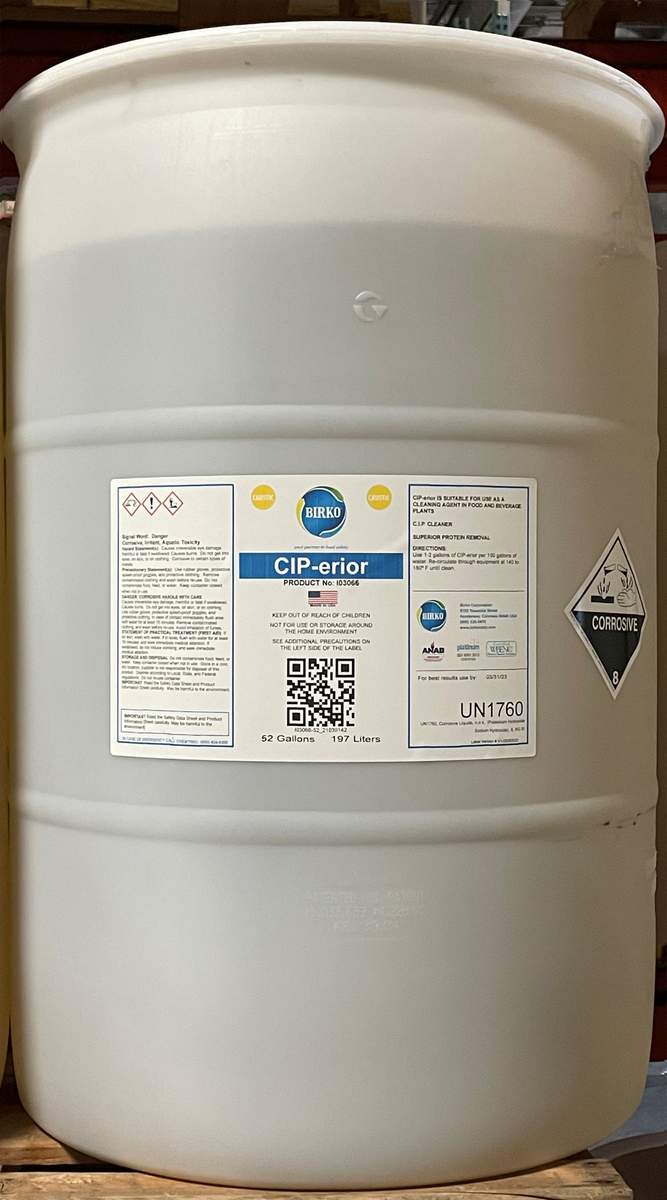
Here are a few things to keep in mind if you decide this approach might work for you:
- Use enough to do the job but do not use too much hydrogen peroxide, or it can cause pump cavitation and the cleaning will not be as effective.
- Keep in mind that hydrogen peroxide concentrate and caustic concentrate are incompatible. The hydrogen peroxide and caustic concentrates absolutely cannot be combined or come in contact with each other or a violent reaction will occur. The caustic needs to be in the water, mixed well, and then the hydrogen peroxide can be added safely.
- The solution will only last about an hour at most, so try to get all of the cleaning done in under an hour.
- Proper PPE is a must! Be sure to use proper eye and skin protection. Eye protection is especially important when transferring concentrated peracetic acid or hydrogen peroxide solutions.
- Cost. Either peracetic acid or hydrogen peroxide can be used but the hydrogen peroxide is much cheaper to use (typically about one-third the cost of EPA registered peracetic acid).
- Cleaning must be done hot for best results. Unlike chlorinated caustic cleaning, which is done below 140°F, (60°C) cleaning with an oxygenated boosted cleaning solution can be done above 140°F, and best results are seen in the range of 160-180°F(cir. 70-80°C)
Do you love brewing equipment? Ok, that’s a little weird, but it’s cool. We get it. Dig all these stories on brewing equipment. Get sick with it!
Conclusion
Brewers spend an inordinate amount of time cleaning. It can be very time consuming, hazardous, and boring. Anything that can be done to improve the cleaning, reduce time and chemical consumption should be viewed as a good thing. In this particular case, adding hydrogen peroxide to the alkaline cleaning solution can dramatically increase the cleaning while cutting the time required for CIP and the results will speak for themselves.
Dana Johnson is the technical director of craft brewing at Birko. He can be reached at [email protected] or (303) 289-1090.

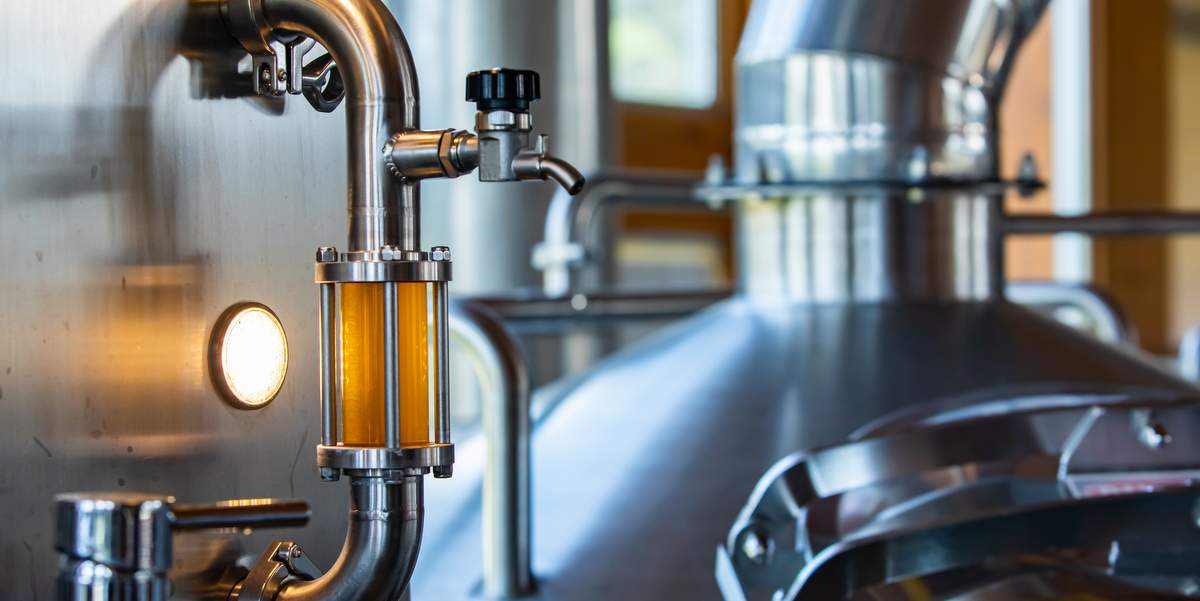
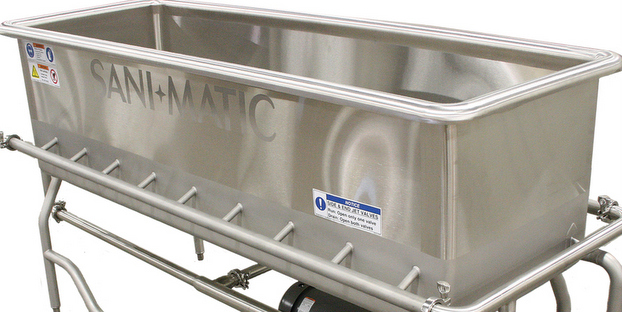
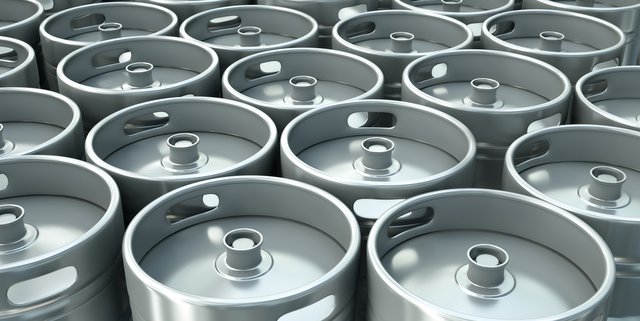
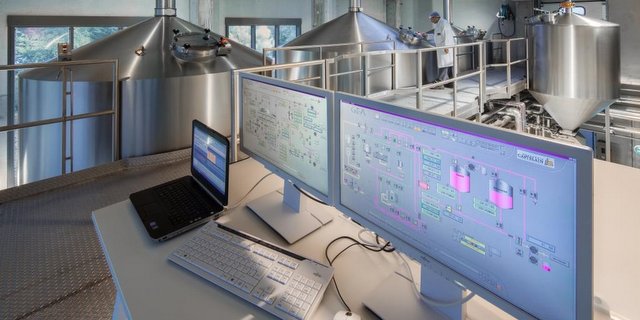
Tyler says
@BirkoCorp FV5 that’s a chonky boi back there